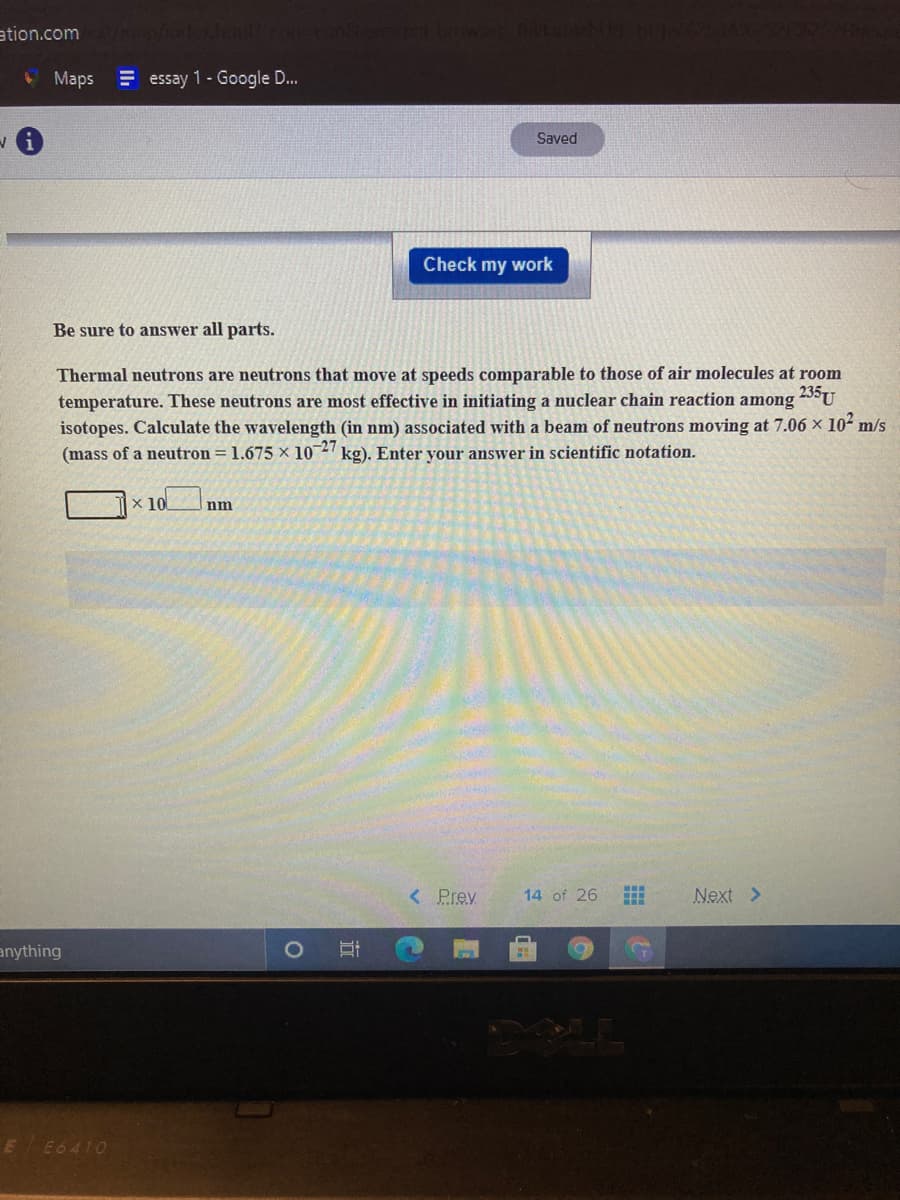Thermal neutrons are neutrons that move at speeds comparable to those of air molecules at room temperature. These neutrons are most effective in initiating a nuclear chain reaction among 23°U isotopes. Calculate the wavelength (in nm) associated with a beam of neutrons moving at 7.06 × 102 m/s (mass of a neutron = 1.675 x 102 kg). Enter your answer in scientific notation. x 10 nm
Atomic Structure
The basic structure of an atom is defined as the component-level of atomic structure of an atom. Precisely speaking an atom consists of three major subatomic particles which are protons, neutrons, and electrons. Many theories have been stated for explaining the structure of an atom.
Shape of the D Orbital
Shapes of orbitals are an approximate representation of boundaries in space for finding electrons occupied in that respective orbital. D orbitals are known to have a clover leaf shape or dumbbell inside where electrons can be found.

To calculate the wavelength(λ), we have a relation
λ = h/mv
where m is the mass, v is the speed and h is planck's constant.
Given,
speed of neutron, v = 7.06 × 102 m/s
mass of neutron, m = 1.675 × 10-27 kg
h = 6.626 × 10-34 Js
Step by step
Solved in 2 steps









